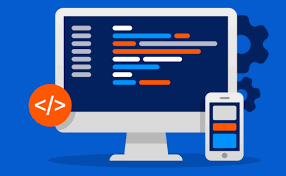Replacing the mouse pointer style with CSS is achieved with built-in cursor and custom pictures. 1. The built-in cursor styles include auto, default, pointer, text, wait, help, and directly set such as button { cursor: pointer; }; 2. Custom pictures need to use url() to specify .cur or .png files, and provide fallback solutions, such as .custom-cursor { cursor: url('icon.cur'), ??auto; }; 3. You can set hot spots such as cursor: url('pointer.cur') 10 10, pointer; 4. It works best when applied to games, creative websites or special interaction prompts, but it should be noted that the mobile side does not support custom cursors, performance impacts and user habits.

Want to change the mouse pointer style on the webpage? In fact, it can be done with cursor attribute of CSS, and it is not difficult.

Common built-in cursor styles
CSS provides some commonly used cursor styles that can be used directly. For example, the default arrow, hand shape, text input I-shaped, etc. These are natively supported by the browser and have better compatibility.

Common values ??include:
-
auto: The browser automatically decides -
default: standard arrow -
pointer: hand shape (commonly used for clickable elements) -
text: I-shaped, suitable for input box -
wait: Wait state (usually hourglass or circles) -
help: an arrow with a question mark, prompting help information
The usage is very simple, such as adding a hand shape to a button:

button {
cursor: pointer;
}This writing method is very direct and is the most commonly used method.
Customize the picture as the cursor
If you want a more personalized mouse style, such as a small icon or brand-style pointer, you can use custom pictures.
CSS supports specifying cursor images through URLs, and the format is as follows:
.custom-cursor {
cursor: url('path/to/icon.cur'), ??auto;
}A few points to note:
- Image format
.curor.png,.curis a dedicated format for Windows cursors, with the best compatibility - It is best to provide multiple sizes, and some systems will select the right image based on resolution
- If the image fails to load, the subsequent
autoordefaultwill take effect as a fallback solution - You can set the hotspot position (i.e. the exact point when clicked), the syntax is
url(...) xy, fallback, for example:cursor: url('pointer.cur') 10 10, pointer;
However, it should be noted that not all browsers fully support custom cursors, especially mobile devices do not support them. Therefore, when using it, you should consider whether it affects the user experience.
Application scenarios and precautions
When is it suitable to change the cursor? Common uses include:
- Game page: Combined with the overall style to enhance immersion
- Creative websites: such as drawing tools and display pages to enhance visual unity
- Special interaction tips: For example, when dragging and zooming, change to specific icons
But also note:
- Don't change the cursor casually, especially where there shouldn't be any changes, as it can easily confuse users
- The mobile version does not support custom cursors, and
url()part will be ignored on iOS and Android. - Large images or animation cursors may affect performance, it is recommended to control file size
- Users are used to standard cursors, too fancy designs may be distracting
Ending
In general, setting up custom mouse pointers with CSS is not complicated, but compatibility and user experience should still be considered in actual applications. Some details such as hotspot settings and format selection are easily overlooked, but they have a great impact on the effect. Basically that's it.
The above is the detailed content of Setting Custom Mouse Pointer Icons Using CSS cursor Property. For more information, please follow other related articles on the PHP Chinese website!

Hot AI Tools

Undress AI Tool
Undress images for free

Undresser.AI Undress
AI-powered app for creating realistic nude photos

AI Clothes Remover
Online AI tool for removing clothes from photos.

Clothoff.io
AI clothes remover

Video Face Swap
Swap faces in any video effortlessly with our completely free AI face swap tool!

Hot Article

Hot Tools

Notepad++7.3.1
Easy-to-use and free code editor

SublimeText3 Chinese version
Chinese version, very easy to use

Zend Studio 13.0.1
Powerful PHP integrated development environment

Dreamweaver CS6
Visual web development tools

SublimeText3 Mac version
God-level code editing software (SublimeText3)

Hot Topics
 What are ARIA attributes
Jul 02, 2025 am 01:03 AM
What are ARIA attributes
Jul 02, 2025 am 01:03 AM
ARIAattributesenhancewebaccessibilityforuserswithdisabilitiesbyprovidingadditionalsemanticinformationtoassistivetechnologies.TheyareneededbecausemodernJavaScript-heavycomponentsoftenlackthebuilt-inaccessibilityfeaturesofnativeHTMLelements,andARIAfill
 How does React handle focus management and accessibility?
Jul 08, 2025 am 02:34 AM
How does React handle focus management and accessibility?
Jul 08, 2025 am 02:34 AM
React itself does not directly manage focus or accessibility, but provides tools to effectively deal with these issues. 1. Use Refs to programmatically manage focus, such as setting element focus through useRef; 2. Use ARIA attributes to improve accessibility, such as defining the structure and state of tab components; 3. Pay attention to keyboard navigation to ensure that the focus logic in components such as modal boxes is clear; 4. Try to use native HTML elements to reduce the workload and error risk of custom implementation; 5. React assists accessibility by controlling the DOM and adding ARIA attributes, but the correct use still depends on developers.
 How to minimize HTTP requests
Jul 02, 2025 am 01:18 AM
How to minimize HTTP requests
Jul 02, 2025 am 01:18 AM
Let’s talk about the key points directly: Merging resources, reducing dependencies, and utilizing caches are the core methods to reduce HTTP requests. 1. Merge CSS and JavaScript files, merge files in the production environment through building tools, and retain the development modular structure; 2. Use picture Sprite or inline Base64 pictures to reduce the number of image requests, which is suitable for static small icons; 3. Set browser caching strategy, and accelerate resource loading with CDN to speed up resource loading, improve access speed and disperse server pressure; 4. Delay loading non-critical resources, such as using loading="lazy" or asynchronous loading scripts, reduce initial requests, and be careful not to affect user experience. These methods can significantly optimize web page loading performance, especially on mobile or poor network
 Describe the difference between shallow and full rendering in React testing.
Jul 06, 2025 am 02:32 AM
Describe the difference between shallow and full rendering in React testing.
Jul 06, 2025 am 02:32 AM
Shallowrenderingtestsacomponentinisolation,withoutchildren,whilefullrenderingincludesallchildcomponents.Shallowrenderingisgoodfortestingacomponent’sownlogicandmarkup,offeringfasterexecutionandisolationfromchildbehavior,butlacksfulllifecycleandDOMinte
 What is the significance of the StrictMode component in React?
Jul 06, 2025 am 02:33 AM
What is the significance of the StrictMode component in React?
Jul 06, 2025 am 02:33 AM
StrictMode does not render any visual content in React, but it is very useful during development. Its main function is to help developers identify potential problems, especially those that may cause bugs or unexpected behavior in complex applications. Specifically, it flags unsafe lifecycle methods, recognizes side effects in render functions, and warns about the use of old string refAPI. In addition, it can expose these side effects by intentionally repeating calls to certain functions, thereby prompting developers to move related operations to appropriate locations, such as the useEffect hook. At the same time, it encourages the use of newer ref methods such as useRef or callback ref instead of string ref. To use Stri effectively
 Vue with TypeScript Integration Guide
Jul 05, 2025 am 02:29 AM
Vue with TypeScript Integration Guide
Jul 05, 2025 am 02:29 AM
Create TypeScript-enabled projects using VueCLI or Vite, which can be quickly initialized through interactive selection features or using templates. Use tags in components to implement type inference with defineComponent, and it is recommended to explicitly declare props and emits types, and use interface or type to define complex structures. It is recommended to explicitly label types when using ref and reactive in setup functions to improve code maintainability and collaboration efficiency.
 How to handle forms in Vue
Jul 04, 2025 am 03:10 AM
How to handle forms in Vue
Jul 04, 2025 am 03:10 AM
There are three key points to be mastered when processing Vue forms: 1. Use v-model to achieve two-way binding and synchronize form data; 2. Implement verification logic to ensure input compliance; 3. Control the submission behavior and process requests and status feedback. In Vue, form elements such as input boxes, check boxes, etc. can be bound to data attributes through v-model, such as automatically synchronizing user input; for multiple selection scenarios of check boxes, the binding field should be initialized into an array to correctly store multiple selected values. Form verification can be implemented through custom functions or third-party libraries. Common practices include checking whether the field is empty, using a regular verification format, and displaying prompt information when errors are wrong; for example, writing a validateForm method to return the error message object of each field. You should use it when submitting
 Server-Side Rendering with Next.js Explained
Jul 23, 2025 am 01:39 AM
Server-Side Rendering with Next.js Explained
Jul 23, 2025 am 01:39 AM
Server-siderendering(SSR)inNext.jsgeneratesHTMLontheserverforeachrequest,improvingperformanceandSEO.1.SSRisidealfordynamiccontentthatchangesfrequently,suchasuserdashboards.2.ItusesgetServerSidePropstofetchdataperrequestandpassittothecomponent.3.UseSS






